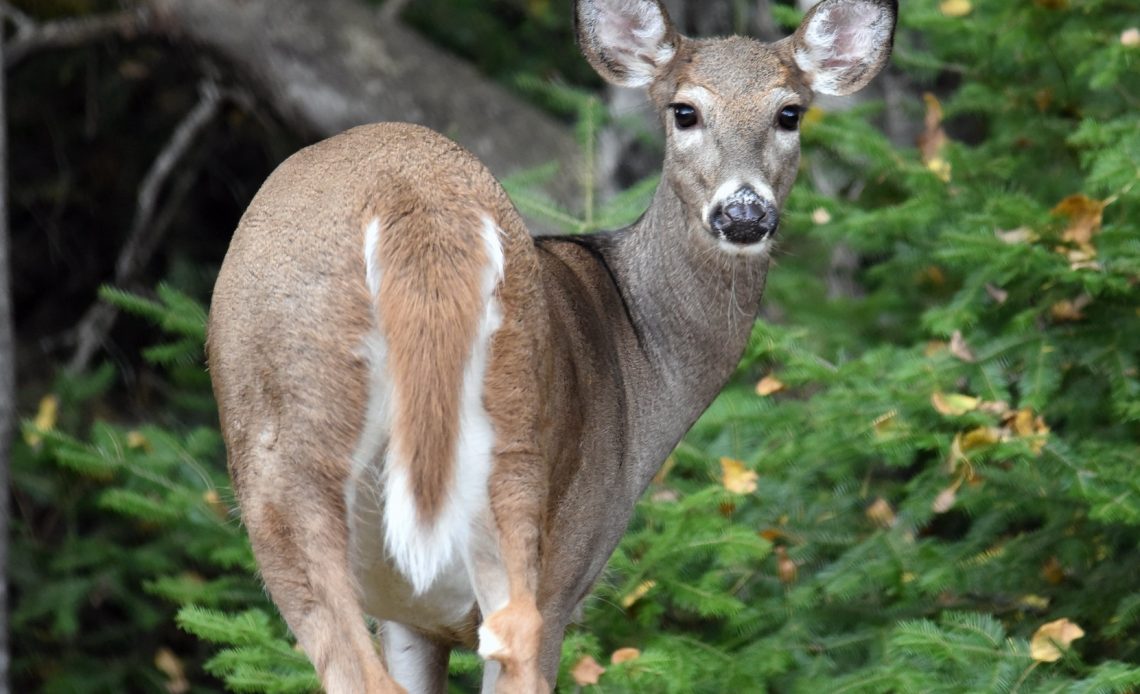

We’re here to help! Wild Yards is a completely free website that is 100% dedicated to helping you create a wildlife-friendly, sustainable yard. Read more
WildYards is reader-supported. When you buy a product through a link on our site, we may earn a comission. Every product is independently selected by our (obsessive) editors and our reviews are unbiased and objective. Read more about our mission or our privacy policy.
Sweet, tasty, and easy to come by in stores as well as online, molasses is widely used as a deer attractant – and even as a consumable, to some extent. However, does molasses attract deer, or is this just a myth?
Molasses is excellent for attracting deer. It’s sweet-smelling, and in the right setting, a hungry deer will likely leap at the chance to lick some off a tree. However, it should be presented delicately. What’s more, it may be worth combining with other food to offer a more nutritious meal.
There’s more to know about deer and molasses than you may imagine – so keep reading for the complete lowdown.
Should I feed molasses to deer?
Sticky and sweet, there’s nothing to say deer won’t enjoy a snack of molasses, but in some states, it is prohibited for people to feed wild deer at all. This is a result of baiting laws and in the interest of helping maintain healthy wildlife and help curtail the spread of certain wild diseases. For example, wildlife protection in Virginia, Colorado, and Utah prohibits deer feeding in all shapes and forms.
Therefore, do take the time to check your own state’s laws and regulations before you leave anything out for these gorgeous animals.
Do also consider that deer are never likely to get their full nutrition from molasses alone. Like all living creatures, they demand balanced diets to be able to live healthily from day to day. If you’re set on attracting deer into your yard, it’s important to know what to balance molasses with.
Why do deer love molasses?
Molasses, when set hard, makes for a durable lick that deer can gradually enjoy. Its smell and taste attract them, and it is widely used to create blocks of lick that you can feed deer outright.
How can I feed molasses to deer?
Again, the secret’s in the salt lick. Molasses is a very common ingredient in deer food blocks, which are very easy to come by (providing your state allows their sale) and usually contain lots of other nutrition to balance out their feed. You can simply set them out for the deer to find, and replace them when necessary.
However, if you are looking for an easy homemade solution to use molasses in its liquid form, it is very easy to make deer treats from scratch.
Quick and easy molasses treats for deer can include creating blocks with mixed corn, honey, and bread. Sun-dried, and baked in the oven for two hours at 200 F, you’ll soon have a healthy, natural deer snack you can leave in your yard (once it’s cool).
Another way to easily feed molasses to deer is by pouring it into a wild feeder and mixing it with peanut butter. It is best if the feeder can drip out the molasses as it melts in the sun, as an easy and useful way of feeding the deer sparingly – and never getting too much.
Peanut butter is fantastic at attracting deer, too – meaning this blend could be what you need to encourage visitors to your yard. Simply mixing it with corn or even acorns works well, too.
If you simply wish to welcome deer into your yard without feeding them regularly, a little molasses spread on a tree for animals to gently lick (or in a feeder with a little peanut butter) will likely be very welcome. If you intend to feed deer full meals outright, you need to consider investing in balanced deer feed.
Conclusion
If you are keen on helping to feed your local deer, especially to help to sustain them in the winter, then molasses is a common and key ingredient. However, it is of the utmost importance that you check it is legal for you to feed your deer in your home state.
Molasses is naturally appealing, and when used in balance with peanut butter and even vanilla extract as a deer attractant, you may find you start to welcome wild visitors. Remember to offer a careful balance in treats and ensure your yard is already set up to welcome deer without baiting.
